Overdrive and Distortion are some of the most common effects used on electric guitar, and most associated with the instrument. The history and development of Overdrive has gone hand in hand with the history and development of electric guitar sounds. This post is aimed to give the beginner or novice guitarist a general understanding of what these sounds are.
I’m going to concentrate on the sound of these effects at the moment, not on the technology and physics of them. Both of those things are incredibly useful to understand in the long run. However the most useful starting point for a beginner is to know what they sound like. That will help you make choices about what to use for your own music.
To begin, let me explain that I’m using the terms Overdrive and Distortion in the way guitarists do – to describe different ‘flavours’ of distorted guitar sounds. This isn’t the way everyone uses them. An audio engineer, for example, would use them to describe certain technical situations occurring inside a piece of electronics. We don’t need to worry about what that is here but it’s useful to remember that they use the terms differently than guitarists do.
Over time guitarists have come to use the terms to refer to different types of distorted sound. Unfortunately there is no official definition among guitarists about what exactly constitutes each of these sounds. Some people in some places use the terms quite differently. What I’m going to give you here is what would be broadly understood by guitarists in the UK, at least in my experience.
I’ll define my understanding of Overdrive and Distortion, with audio examples, and I’m going to add a third flavour – a light Distortion which I call ‘Crunch’. In my descriptions I’ll use a number of the adjectives and descriptions guitarists commonly use to describe these sounds. The sound files will let you hear them for yourselves and relate the descriptions to the sounds.
This is the way that I think about the various types of distorted sound I might want to use. If I’m putting together a general-purpose pedal board (rather than one for a specific show or gig) I’ll definitely make sure I have one of each of these types of sound available in case I need it.
Crunch
A light Overdrive. The sound is just beginning to break up or distort but it doesn’t sound too dirty. If you play a chord you can still just about make out the individual notes in the chord. They haven’t all blurred into one sound. Guitarists might describe this sound as crunchy, gritty or driven. I’ve heard some people describe the sound as having a bit of ‘bite’ or some ‘hair’ on it.
Artists associated with this kind of sound tend to be the early blues and rock pioneers. The Rolling Stones are the ones who immediately come to mind. Their guitar sound isn’t super heavy rock, but it’s got a bit of drive. The song Get Off My Cloud is a good example of what I think of as ‘Crunch’.
Crunch is useful to make a guitar sound stand out and give it a bit of aggression while still maintaining some clarity and definition of individual notes.
Crunch Guitar Tone
Clean Guitar Tone for Reference
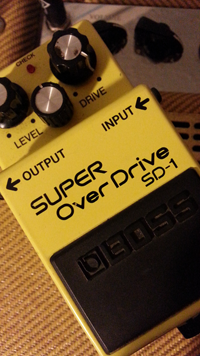 Overdrive
Overdrive
This is where the guitar sound has become so distorted that it is difficult to distinguish individual notes in a chord. The sound has blurred into one thick, powerful whole. We might call it dirty, thick, chunky, ‘rock’-y, or heavy. It tends to sound a bit organic, muddy, often ‘mushy’ and mid-range heavy. It sounds great for soaring lead guitar, power chords and riffs. It adds a lot of volume and sustain to whatever you are playing. Think Led Zeppelin, AC/DC, Guns ‘n’ Roses, Aerosmith, Bon Jovi, Van Halen. If you want Rock then this is the sound for you.
There a million sub-flavours of Overdrive, far too many to go into here. I’m only just scratching the surface of them in my own playing. Once I understand them better I might try to categorise them in a future post. There are hundreds of pedals out there on the market offering different varieties of Overdriven sound. If that’s what you’re looking for then try plenty of them, try them in different combinations and buy the ones that give you the sound you like.
Overdrive Guitar Tone
A useful thing to know is that Crunch and Overdrive effects sometimes overlap. If you have a Crunch sound and you boost the gain or drive setting you might (depending on what gear you’re using) get into Overdrive territory. An example of this is AC/DC. If you listen to their album High Voltage that has a kind of heavy Crunch sound, whereas Highway to Hell and Back in Black have just tipped the scale into what I would call Overdrive. However, even on those albums the Overdrive is nowhere near as heavy as it sounds on something like Guns ‘n’ Roses’ Appetite for Destruction.
Borderline Crunch / Overdrive Tone
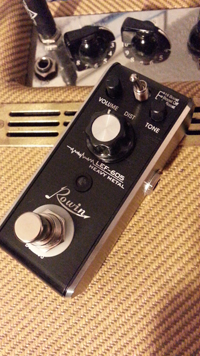 Distortion
Distortion
If Overdrive was Rock, then Distortion is Metal. Specifically Metal from the Metallica / Slayer etc. era onwards, including the Nu-Metal bands like Limp Bizkit, Korn and Linkin Park, Alternative Metal like System of a Down and any of the Death-, Black-, Doom-, etc. Metal of modern times. This is the fizzy, harsh, raspy, heavy, powerhouse sound of these bands where having the heaviest sound around is paramount.
Compared to Overdrive it is much less organic and natural. It is harsh and metallic – suiting the music it serves! Whereas Overdrive is an extension of Crunch, modern Distortion is a different animal altogether. A Distortion pedal probably won’t do Overdrive or Crunch well (unless it’s a multi-effects pedal or is specifically designed to have two separate sounds in the one unit). There are some exceptions – the ProCo Rat for example – but generally I think of Distortion as a distinctly different effect to Overdrive.
Distortion needs to be used carefully. If set up wrong it can just sound awful. When you experiment with it make sure that you experiment with the EQ controls of whatever device you are using. The wrong settings will make you sound like incoherent mush or a wasp buzzing round in a jar rather than a heavy metal hero. As a rough guide for conventional metal sounds, if you are playing rhythm then high bass and treble and low mids are best – the classic ‘scooped’ sound. However, when you take a solo you will need to boost the mids and cut the treble to avoid having a puny, thin, ‘wasp in jar’ sound. This may require a separate pedal or switching to another channel on your amp.
Rhythm Distortion – ‘Scooped’ Tone
Lead Distortion Tone
If Metal is your thing it would be worth doing some research into how to set up Distortion well. There are no shortage of great players on YouTube who are bound to have videos on this kind of thing.
Grey Areas
One thing to be aware of is that in the ‘olden days’ (seventies / eighties) what we now call ‘Overdrive’ was called ‘Distortion’. At the time it was the heaviest sound there was. Then the thrash metal bands of the eighties came along (Metallica, Megadeath, Anthrax, Slayer) and really pushed the boundaries of how far you could distort the guitar. Eventually their new sound came to be known as ‘Distortion’ and the old sound picked up the ‘Overdrive’ label.
Why is this history lesson important? Because some pedals that call themselves ‘Distortion’ pedals really aren’t. They’re Overdrive pedals, they just haven’t caught up with the new terminology. Two examples are the Rowin Distortion and the Cornell Distortion pedals. They’re both fantastic rock pedals, but you’d be disappointed if you bought them wanting an authentic metal sound.
So don’t go by the name of the pedal. Listen to it and judge for yourself. Even if there’s not one at your local music shop you can usually find Youtube demos of almost any pedal out there.
Another grey area is that Americans often use ‘Crunch’ to refer to a metal rhythm sound – the ‘scooped’ tone demonstrated above. That’s very different to the light bluesy tone I think of when I use the term. If in doubt, ask the person to name some artists who have the kind of tone they’re talking about. That should narrow it down.
The Smaller Cousin
One smaller category I haven’t talked about yet deserves an honourable mention. Fuzz is kind of similar to Overdrive but goes full on into mush territory. It tends to sound as though something in your amp has broken! It can still sound organic but there is very little note definition, just a big woolly sludge of sound. It’s not so popular these days but Hendrix was a big fan. It featured heavily during his concert at Woodstock and that seemed to go down OK!
Dave Gilmour also used a fuzz pedal for some of his famous solos (Echoes and Time, among others). The pedal both Hendrix and Gilmour used was a Dallas Arbiter Fuzz Face. Jim Dunlop now make a reproduction of this.
One good pedal that straddles the line between Overdrive and Fuzz is the Electro-Harmonix Big Muff. They’re inexpensive and have been used by countless great bands and artists including Gilmour, Santana, Thin Lizzy, Frank Zappa, Nirvana, Smashing Pumpkins and many more.
Summary
So there you have it. That’s the three broad categories of Overdrive and Distortion I use and that will be understood, more or less, by many other guitarists you speak to. It’s enough for the beginner to get by and start experimenting with the sounds they like. The type of Crunch, Overdrive or Distortion you use is a bit part of your sound. Often guitarists are identifiable because of their distinctive tone. Their choice of distortion can be a big part of this. It’s worth experimenting to find the sound that really works for you.
I’d be interested to know in the comments if you have any pedals, amps or other equipment that you particularly like for these sounds. Let me know what it is, which category you would put it in, and why you like it so much.
Next up I’ll be recommending three affordable Crunch, Overdrive and Distortion pedals which will give the beginner guitarist each of the sounds above to begin experimenting with.
I’m grateful to the following musicians for reviewing this post: Maisey (Terminal Gods), Christian (Pretentious, Moi?), Alex King (Berlin Black), Nicky Meyer, Christina Emery (Red Sun Revival), Natasha Donald (Isolation Division) and Sarah Garrod (Zara). Of course, any errors and omissions are entirely my own and no reflection on the reviewers.

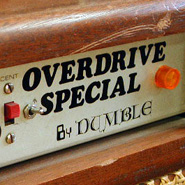
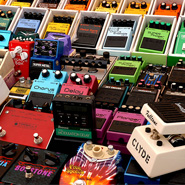
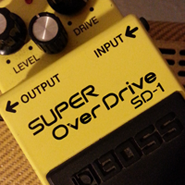
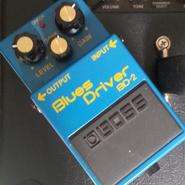
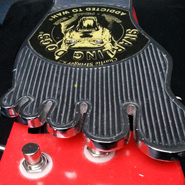
Bated breath for next installment! Seriously, an informative and well illustrated bit of exposition you posted here. Thanks very much.
Thanks Ron – I’ve got several at ‘final draft’ stage so I’ll try to get one of those out tomorrow. I’ve just been hired for a 6 week run of a musical, so that’s consuming lots of my time at the moment. All good, but gets in the way of the blogging!
The electro-harmonix Soul Food Distortion/Fuzz/Overdrive Pedal just came up on the radar in a very big way. I think it’s a recent advent. I’m feeling very crunchy right now.
Good call Ron. I hadn’t heard of it before, but I’ve just listened to some clips of it online. It sounds like a Crunch / Light Overdrive to me. If you combined it with another pedal or a driven amp you could definitely get some full on Overdrive going with it too.
One review said it was aiming to emulate the legendary Klon Centaur – and at a a fraction of the price. Definitely worth picking one up if you like that kind of sound (and I do!)
Pingback: Best Beginners' Overdrive Distortion Pedals - Matt Helm Guitar
Pingback: Overdrive for Beginners - Boss SD-1 Super Overdrive Pedal
Thank you for this. Especially the crunch vs overdrive, which I think I had backwards.
You’re welcome. Remember that these aren’t official definitions, just my understanding of the most common uses of the terms. There will be people who use them differently – I’ve come across it several times. But it helps me to think in these terms, so I thought I’d share that with people.
Matt